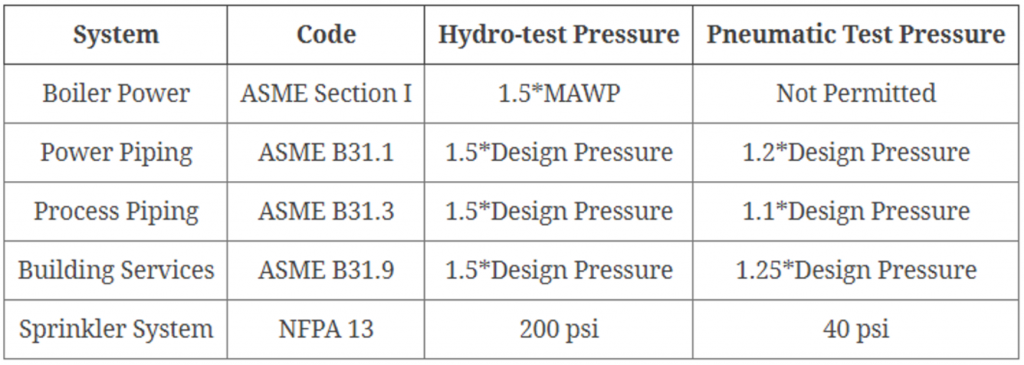Hydrotest is often carried out after a construction or maintenance activity of a piping system. It is more significant to Hydrotest piping after a new piping system is installed, it is essential to the commissioning activity.
Read also: Pressure Sensing Devices in the Industry
Need to Hydrotest
After new piping is laid in the plant or facility. There are multiple reasons to Hydrotest a line. Few of these are listed below:
- To verify the integrity of the piping system.
- To ensure the safety and reliability of the piping system.
- To check out the weld joints’ quality.
- To make sure the system is leakproof.
- To relieve the stresses from the system.
Equipment required for Hydrotest
- Pump – To create pressure inside the system
- Hose and fittings – To connect the pump, piping system, and other equipment
- Test medium – Most of the time water is used as a test medium
- Pressure Gauge – To measure inside pressure. The range of gage 1.5 to 4 times the Hydrotest pressure.
- Temperature Gauge – To notify the allowable temperature
- Torch Flash – For visual inspection of leakage
- Torque wrench – For proper tightening of joints
- Supports- To fix the pipe or vessel, before the test starts
Properties of water used for Hydrotest
The water used for Hydrotest must-have characteristics near to potable water, which is as follows:
- Percentage of Hydrogen (pH) – should be between 7 to 8.5
- Water Hardness – it should be between 150 – 400 ppm
- Calcium Hardness (Ca) – it should not be more than 80 ppm
- Magnesium Hardness (Mg) – below 40 ppm is acceptable
- Iron Content (Fe) – should be within 0.3 ppm
- Turbidity – allowed till 10 – 20 ppm
- Total Suspended Solids (TSS) – Should NIL
- Temperature – it should not be less than 17°C
Quantity of water required for the test
The quantity of water can be calculated by using the following formula:

Where,
d = Diameter of pipeline
L = Length of pipeline
V = Gallons of water required

1 Comment
Fire Types and Fire Extinguishers - Chemiopedia · December 7, 2022 at 4:58 pm
[…] Piping Hydro Test after a Construction/Maintenance Activity […]
Comments are closed.